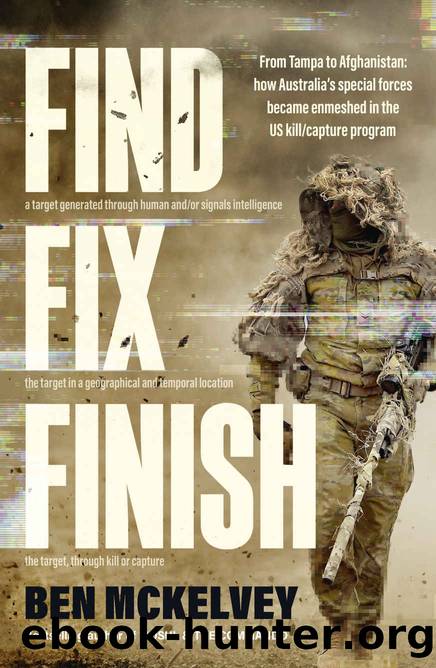Find Fix Finish by Ben Mckelvey

Author:Ben Mckelvey [Mckelvey, Ben]
Language: eng
Format: epub
Publisher: HarperCollins
Published: 2022-10-01T05:00:00+00:00
18
âWe were like, âFuck it, these people are all against usââ
IN THE AUTUMN OF 2007, Australians started dying in Uruzgan. The first death was a cavalryman serving as part of the RTF. Trooper David âPoppyâ Pearce had been driving in an Australian light armoured vehicle (or ASLAV) back to Tarin Kot, near Dorafshan. His vehicle hit an IED and he was killed. Force Element Alpha and Force Element Bravo would each also lose a soldier.
In September 2007, the Chora Valley was, yet again, falling under insurgent control. After the battle in Chora in June, the Dutch forces had largely left control of the area to Afghan police and military, and those local elements had been unable to stop insurgents taking over. As the SOTGâs rotation five came into Uruzgan, they knew one of their first jobs would be to support yet another large-scale clearance of the Chora, this time named Operation Spin Ghar. The main assaulting force would be British, and would include the Gurkha Regiment, the famed British-Nepalese fighting force.
A 2 Squadron SASR element was tasked with a number of close-target reconnaissance roles supporting a larger conventional force, which meant they would sneak into the valley before the clearance and report on what they saw: how many enemy soldiers there were, where they were and what weapons they had. This was a traditional combat role for the regiment, and through the nights before the clearance, E Troopâs four combat patrols would secrete into Chora and report back.
On 21 October, three armed men almost bumped into one of the E Troop patrols, so, at a distance of just two metres, the Australians killed them. On 23 October, Sergeant Matthew Locke, one of E Troopâs patrol commanders and a man who had already won the Medal for Gallantry in the peaks above Chora, actually entered a number of empty dugout enemy fighting positions. He measured them with his rifle, before returning to base and creating wire-frame diagrams of the position on his computer, which were then sent to the clearing force.
* * *
The commanding officer of these E Troop patrols was a 26-year-old captain named Mark Wales. SASR officers, like their men, are often formidable figures, and that was true of Wales, who stood six-foot-three and had muscular bulk comparable to any operator. Within the SASR, however, officers do not have the automatic standing and influence they enjoy in other regiments.
With officers coming in and out of the regiment, the corporals and sergeants of the SASR, especially those commanding patrols and those with combat experience, were the powerbase of the regiment. With six combat rotations having been undertaken in Afghanistan, some non-commissioned officers, or NCOs, were on their fourth rotation, and these more experienced and battle-hardened NCOs were developing influence that went beyond their rank. Every officer coming into the SASR knew his fate was in the hands of his soldiers, and especially his NCOs, which included Koran Ghar veteran Matthew Locke.
âIf you lost trust of the team, were rejected by
Download
This site does not store any files on its server. We only index and link to content provided by other sites. Please contact the content providers to delete copyright contents if any and email us, we'll remove relevant links or contents immediately.
| Civil War | Operation Desert Storm |
| Veterans | Vietnam War |
The Radium Girls by Kate Moore(10918)
The Templars by Dan Jones(4194)
100 Deadly Skills by Clint Emerson(4087)
Rise and Kill First by Ronen Bergman(4023)
The Doomsday Machine by Daniel Ellsberg(3738)
The Rape of Nanking by Iris Chang(3526)
Killing England by Bill O'Reilly(3462)
Hitler in Los Angeles by Steven J. Ross(3447)
Stalin by Stephen Kotkin(3091)
12 Strong by Doug Stanton(3060)
Hitler's Monsters by Eric Kurlander(2737)
Darkest Hour by Anthony McCarten(2651)
Blood and Sand by Alex Von Tunzelmann(2611)
The Art of War Visualized by Jessica Hagy(2417)
Hitler's Flying Saucers: A Guide to German Flying Discs of the Second World War by Stevens Henry(2301)
The Code Book by Simon Singh(2219)
The Second World Wars by Victor Davis Hanson(2137)
Babylon's Ark by Lawrence Anthony(2074)
Tobruk by Peter Fitzsimons(2065)
